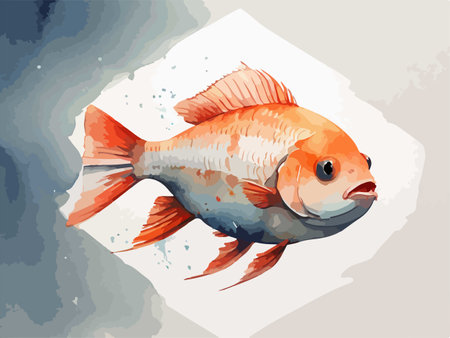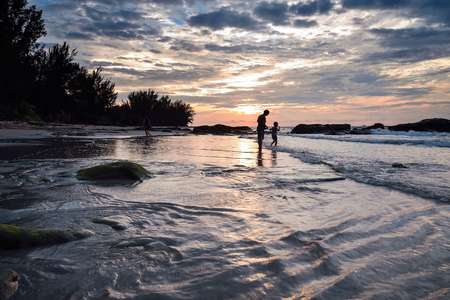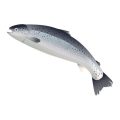Top Game Fish in the Florida Keys
The Florida Keys are a dream destination for saltwater anglers, offering warm waters, stunning scenery, and some of the best sport fishing in the world. Whether youre casting from a flats boat or heading offshore, the variety of game fish here is unmatched. Let’s dive into the top species you’ll want to target when fishing these legendary waters.
Tarpon – The Silver King
Known as the “Silver King,” tarpon are one of the most iconic game fish in the Florida Keys. These powerful fish can grow over 100 pounds and are famous for their acrobatic leaps and long fights. The best time to catch tarpon is during their annual migration from April to June, especially around bridges and channels.
Why Anglers Love Tarpon:
- Incredible strength and stamina
- Exciting surface strikes
- Catch-and-release friendly
Bonefish – Ghosts of the Flats
If youre into sight fishing on clear, shallow flats, bonefish are your target. These elusive fish are known for their speed and stealth. The Florida Keys are one of the few places in the U.S. where you can consistently find bonefish in good numbers, especially around Islamorada and Biscayne Bay.
Bonefish Quick Facts:
| Feature | Details |
|---|---|
| Average Size | 3–5 pounds (can reach up to 10) |
| Best Season | March through October |
| Preferred Habitat | Shallow sand and mud flats |
Permit – The Ultimate Flats Challenge
Permit are often considered one of the toughest game fish to catch on fly or light tackle. Found on the same flats as bonefish, permit require patience, skill, and a bit of luck. Their keen eyesight and cautious nature make them a prized catch among seasoned anglers.
Hotspots for Permit:
- The Lower Keys backcountry
- Sugarloaf Key flats
- Cape Sable area near Everglades National Park
Mahi-Mahi – Offshore Thrill Seeker’s Favorite
If heading offshore is more your style, mahi-mahi (also known as dolphin fish) provide fast action and bright colors that make every trip memorable. These fish are aggressive feeders and travel in schools, making them an exciting target for trolling or casting around floating debris.
Mahi-Mahi Overview:
| Characteristic | Description |
|---|---|
| Coloration | Bright green, yellow, and blue hues |
| Tactics | Trolling with rigged ballyhoo or casting jigs near weed lines |
| Best Months | May through September |
The Takeaway: A World-Class Fishery Awaits
The diversity of saltwater species in the Florida Keys makes it a must-visit location for any angler. From battling tarpon in the backcountry to chasing mahi-mahi offshore, theres something here for everyone—no matter your experience level or preferred fishing style.
2. Best Times and Seasons to Fish
If youre planning a saltwater fishing trip to the Florida Keys, timing is everything. The islands offer year-round fishing, but certain months are better for specific species. Understanding the seasonal patterns and how the weather affects fish behavior can help you make the most of your trip.
Peak Seasons for Popular Species
Here’s a quick look at when some of the most sought-after fish are biting in the Keys:
| Fish Species | Best Months |
|---|---|
| Tarpon | April – June |
| Mahi-Mahi (Dolphin Fish) | May – August |
| Sailfish | December – March |
| Yellowtail Snapper | Year-Round (best in Summer) |
| Grouper | May – December (seasonal regulations apply) |
| Bonefish | March – October |
How Weather Affects Fishing in the Keys
The Florida Keys have a subtropical climate, which means warm temperatures year-round, but seasonal changes still play a role in fish activity. Heres how:
- Winter (Dec–Feb): Cooler waters bring pelagic species like sailfish closer to shore. Winds can be stronger, which might limit offshore trips.
- Spring (Mar–May): Warming waters trigger tarpon migration and increased activity from bonefish and permit.
- Summer (Jun–Aug): Calm seas and warm temps are ideal for offshore fishing—great for mahi-mahi and tuna.
- Fall (Sep–Nov): Transition season with fewer crowds; good time for snapper, grouper, and early sailfish action.
Tips for Planning Around the Bite Windows
- Book Early: Peak tarpon and mahi-mahi seasons fill up fast. Make reservations months ahead if possible.
- Tide Matters: Many species bite best during moving tides. Use local tide charts to plan your outings.
- Work with Guides: Local captains know the best times and spots. They’ll factor in weather, tides, and recent activity.
- Avoid Cold Fronts: Sudden temperature drops can shut down bites, especially in winter.
Your Perfect Fishing Window Awaits
No matter when you visit the Florida Keys, there’s always something biting—but if youre targeting specific species or hoping for that trophy catch, aligning your trip with peak seasons can make all the difference.

3. Essential Gear and Tackle for Saltwater Success
If youre planning a fishing adventure in the Florida Keys, having the right gear can make or break your trip. Whether youre casting inshore for snook and redfish or heading offshore for mahi-mahi and tuna, its important to match your tackle to the species youre targeting. Heres a breakdown of essential rods, reels, lures, and bait, plus some top local tackle shops where you can rent or buy what you need.
Recommended Rods and Reels
In the Keys, youll want a mix of setups to handle both inshore and offshore action. Heres a quick guide:
| Target Area | Rod Type | Reel Type |
|---|---|---|
| Inshore (e.g., mangroves, flats) | Medium-light spinning rod (7 ft) | 2500–4000 size spinning reel |
| Offshore (e.g., reefs, deep sea) | Heavy-action conventional rod (6–7 ft) | 30–50 class conventional reel |
Top Lures and Baits for the Keys
The fish here can be picky, so it helps to come prepared with a variety of options. These are tried-and-true favorites among local anglers:
| Species | Lures | Live/Dead Bait |
|---|---|---|
| Tarpon | Soft plastic swimbaits, topwater plugs | Live mullet, crabs |
| Snook & Redfish | Spoons, jerkbaits | Shrimp, pinfish |
| Mahi-Mahi | Trolling skirts, feathers | Ballyhoo, squid strips |
| Tuna & Wahoo | Diving plugs, vertical jigs | Sardines, chunked baitfish |
Where to Get Your Gear in the Florida Keys
If you don’t want to haul your own gear down to the Keys—or if you forget something—don’t worry. There are plenty of well-stocked tackle shops throughout the islands that offer rentals and expert advice:
- World Wide Sportsman – Islamorada: A massive selection of saltwater gear and apparel. Great for both beginners and pros.
- Tackle Center of Islamorada: Local favorite with knowledgeable staff who know what’s biting and what works best.
- Murray Marine – Key West: Offers quality gear rentals for both inshore and offshore trips.
- Kmart – Marathon: Surprisingly solid tackle section for last-minute needs.
Pro Tip:
If youre booking a charter trip, check with your captain first—many charters provide all necessary equipment as part of the package.
The right gear can help you land the catch of a lifetime in the Florida Keys. With this guide on hand, you’ll be ready to hit the water like a pro.
4. Fishing Hotspots You Can’t Miss
The Florida Keys are packed with world-class fishing spots, each offering a unique experience. From shallow backcountry waters to deep offshore adventures, there’s something for every saltwater angler. Here’s a breakdown of the top fishing locations throughout the Keys and what techniques work best in each area.
Islamorada – The Sportfishing Capital of the World
Known for its rich backcountry and nearshore waters, Islamorada is perfect for both beginners and seasoned anglers. The flats and mangroves here are teeming with bonefish, tarpon, and permit.
Best Techniques:
- Fly Fishing: Ideal for targeting bonefish and permit on the flats.
- Live Bait Fishing: Great for catching tarpon around the bridges and channels.
Marathon – Bridges and Reefs
Marathon offers access to both the Gulf of Mexico and the Atlantic Ocean. The famous Seven Mile Bridge is a hotspot for snapper, grouper, and tarpon.
Best Techniques:
- Bottom Fishing: Drop baits near bridge pilings for snappers and groupers.
- Trolling: Effective offshore for mahi-mahi and kingfish.
Big Pine Key – Quiet Flats and Channels
This area is less crowded, making it perfect for a peaceful day on the water. Youll find plenty of seatrout, redfish, and snook in the shallows.
Best Techniques:
- Light Tackle Casting: Use soft plastics or shrimp under a popping cork.
- Sight Fishing: Perfect in clear shallow water when targeting redfish or snook.
Key West – Deep Sea Adventures
The southernmost point in the U.S., Key West is known for its deep sea fishing opportunities. Head offshore for tuna, sailfish, wahoo, and more.
Best Techniques:
- Trolling: Best method for pelagic species like mahi-mahi and wahoo.
- Deep Dropping: Target snowy grouper and tilefish in deeper waters using electric reels.
Top Fishing Spots at a Glance
| Location | Main Species | Recommended Technique |
|---|---|---|
| Islamorada | Tarpon, Bonefish, Permit | Fly Fishing, Live Bait |
| Marathon | Snapper, Grouper, Mahi-Mahi | Bottom Fishing, Trolling |
| Big Pine Key | Redfish, Seatrout, Snook | Sight Fishing, Light Tackle Casting |
| Key West | Sailfish, Tuna, Wahoo | Trolling, Deep Dropping |
No matter where you cast your line in the Florida Keys, youre bound to hook into something special. Each spot has its own vibe and set of challenges—just match your technique to the area and enjoy the ride!
5. Choosing the Right Charter or Going DIY
When planning your saltwater fishing trip in the Florida Keys, one of the first big decisions youll face is whether to book a charter or go the do-it-yourself (DIY) route. Both options have their perks and challenges, and the right choice depends on your experience level, budget, and what kind of fishing adventure youre after.
Charter Fishing: Let the Pros Lead the Way
Hiring a local charter captain gives you access to expert knowledge, top-notch gear, and insider tips on where the fish are biting. Most charters include everything you need—bait, tackle, licenses, and even drinks or snacks depending on the package. Captains are also well-versed in regulations, helping you stay legal without stress.
Pros of Charter Fishing:
- Local Expertise: Captains know the best spots and tactics for each species.
- Less Planning: Gear, boat, bait, and licenses are usually included.
- Better Success Rate: More likely to land trophy fish with an experienced guide.
Cons of Charter Fishing:
- Cost: Charters can be pricey, especially for full-day trips.
- Limited Flexibility: Youre on their schedule and fishing style.
DIY Fishing: Freedom and Adventure
If youre confident in your skills and love planning your own trip, going DIY might be perfect. You can rent a boat or fish from shore, bridges, or piers. Its more affordable and allows you to set your own pace—but it also means handling logistics like permits, gear, and safety yourself.
Pros of DIY Fishing:
- Budget-Friendly: Great option if youre trying to save money.
- Total Freedom: Fish where you want, when you want.
- Personal Satisfaction: Theres nothing like catching fish entirely on your own terms.
Cons of DIY Fishing:
- No Guidance: You’ll need to research hotspots and techniques yourself.
- You Handle Everything: From baiting hooks to navigating waters safely.
Comparison at a Glance
| Charter Fishing | DIY Fishing | |
|---|---|---|
| Cost | Higher (but includes equipment & license) | Lower (you provide everything) |
| Experience Needed | None required | Moderate to high |
| Flexibility | Fixed by charter schedule | Total freedom |
| Catching Success | Higher with expert guidance | Depends on your skill & research |
| Packing & Prep | Minimal – mostly handled by crew | You bring all gear & supplies |
Permits and Regulations You Need to Know
The Florida Fish and Wildlife Conservation Commission (FWC) oversees fishing rules in the Keys. If youre going with a licensed charter, they typically cover all necessary licenses. But if youre fishing on your own, youll need a valid Florida saltwater fishing license. Some species like tarpon or spiny lobster may require additional permits or have strict seasons and size limits. Always check the latest regulations before heading out at myfwc.com.
Quick Tip:
If youre new to saltwater fishing in the Keys or want a hassle-free experience with better odds at landing a big one, go with a charter. But if youre confident in your abilities and enjoy planning every detail yourself, DIY can be incredibly rewarding too!
No matter which route you choose, make sure youre prepared and informed so you can enjoy an unforgettable day out on the water in the beautiful Florida Keys.
6. Tips for Responsible and Sustainable Fishing
Fishing in the Florida Keys is an unforgettable experience, but it’s important to fish responsibly to help preserve this marine paradise for future generations. From understanding local laws to handling fish with care, heres how you can enjoy saltwater fishing while protecting the environment.
Catch and Release Best Practices
If youre not keeping your catch, practicing proper catch and release techniques is essential. This helps ensure that fish survive after being returned to the water.
Key Steps for Catch and Release
| Step | Description |
|---|---|
| Use Circle Hooks | They reduce deep hooking and are easier to remove. |
| Handle Fish Gently | Wet your hands first and avoid squeezing or touching the gills. |
| Minimize Air Exposure | Keep the fish in the water as much as possible before release. |
| Revive Before Release | Gently move the fish back and forth in the water to help it regain strength. |
Know and Follow Local Conservation Laws
The Florida Keys are part of a unique ecosystem, so fishing regulations are strictly enforced to protect marine life. Before heading out, make sure youre up-to-date on:
- Bag Limits: The maximum number of fish you can keep per day.
- Size Limits: Minimum and maximum size requirements for different species.
- Seasonal Closures: Certain species may be off-limits during spawning seasons.
- Protected Species: Some fish like Goliath Grouper and Sawfish are completely off-limits.
Protecting Marine Ecosystems
The coral reefs and seagrass beds in the Florida Keys are delicate habitats that support a wide variety of marine life. As an angler, you play a role in keeping these ecosystems healthy.
How You Can Help:
- Avoid Anchoring on Reefs: Use mooring buoys instead of dropping anchor on coral formations.
- Dispose of Waste Properly: Never throw fishing lines, hooks, or trash into the ocean.
- Use Reef-Safe Sunscreen: Many sunscreens contain chemicals harmful to corals—choose reef-friendly products instead.
- Report Violations: If you see illegal fishing activity, report it to local authorities or FWC (Florida Fish and Wildlife Conservation Commission).
Your Impact Matters
Sustainable fishing isn’t just about following rules—it’s about preserving the sport we love for years to come. By respecting wildlife, following regulations, and practicing eco-friendly habits, you’re helping to ensure that future generations will also get to enjoy the magic of fishing in the Florida Keys.


